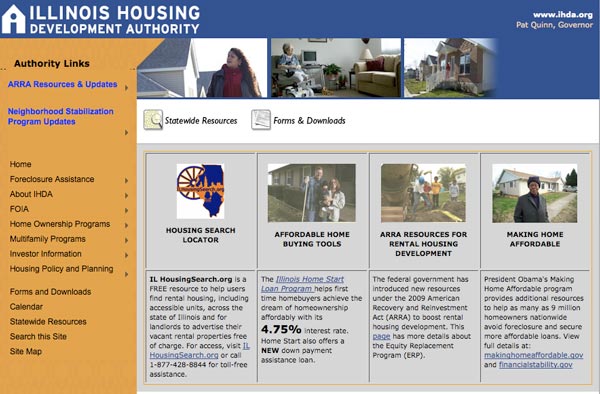 It’s been a quandary most of the year: real-estate prices are tantalizing now, but getting a mortgage is rough. The Illinois Housing Development Authority (IHDA) has a little-known program that makes borrowing easier for state residents; it offers interest rates lower than the prevailing norm for conventional loans, accepts borrowers with credit scores lower than most big lenders now require, and can provide down payment assistance that the buyer does not have to pay back (although that comes with a higher interest rate).
It’s been a quandary most of the year: real-estate prices are tantalizing now, but getting a mortgage is rough. The Illinois Housing Development Authority (IHDA) has a little-known program that makes borrowing easier for state residents; it offers interest rates lower than the prevailing norm for conventional loans, accepts borrowers with credit scores lower than most big lenders now require, and can provide down payment assistance that the buyer does not have to pay back (although that comes with a higher interest rate).
“We want to get people into houses they can afford,” says Gloria Materre, whom Governor Pat Quinn appointed to run IHDA in September (she had been his deputy chief of staff since April). IHDA is a quasi-governmental agency, funded by bond financing, not state revenue; it is charged with expanding access to affordable housing within the state. It has low-income housing programs, but right now it is also “ramping up the effort to help people get home loans,” Materre says.
IHDA’s Home Start loans, available to veterans and first-time buyers, are 30-year, fixed-rate loans with an interest rate of 4.75 percent; the average interest rate on conventional loans is now slightly over 5 percent.
On top of that, potential buyers can qualify for these loans with credit scores of 620 or higher; most banks expect buyers to have a credit score in the 700s if they want low interest rates. Until early December, IHDA’s minimum credit score was 640. “We reduced it to get more loans through the door,” Materre says. One reason the agency can offer loans to people with lesser credit histories is that it requires all borrowers to go through a mortgage-counseling program. “That’s key,” Materre explains, “because we want to make sure you know how to keep from going into default.”
Home Start also offers down-payment assistance, a ten-year forgivable loan of 3 percent of the purchase price, up to $6,000. (If the borrowers live in the house for ten years, there is no payback requirement; if they live there for a shorter time, some payback is required.) Borrowers can’t get the entire down payment covered; they have to kick in at least $1,000. (Materre notes that coming up with that amount is relatively easy, considering that many bank lenders these days are requiring a down payment of 10 to 20 percent—or at least $10,000 per $100,000 in purchase price.) If they take advantage of the down-payment assistance, Home Start borrowers pay a higher interest rate—5.25 percent—but the savings on the down payment may offset the cost of that increase.
Borrowers who want to take advantage of IHDA’s easier lending terms have to meet certain income and purchase price standards and other qualifications. (The IHDA’s website is not as user-friendly as it could be, but Materre says it will be upgraded in the first half of 2010.) The agency is in the process of getting the word out to mortgage brokers and banks about its Home Start offerings, so you can also ask your mortgage broker whether you qualify for the program.
Materre says that IHDA is working on getting to a point where it can service all its loans in-house (its loans are now serviced by US Bank). Given the enormous problems that have rippled through the nation’s economy because of loans being sliced, diced, and resold to remote, unknown servicers, having a loan that is being handled by the quasi-governmental agency that issues it should settle some nerves. “You’ll know who you’re working with,” Materre says.


